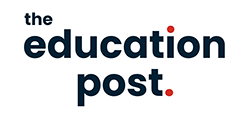Following the slew of immigration policy changes – both anticipatory and enacted – since US President Donald Trump took office in 2025, student enrolments are among the categories keenly feeling the impact.
However, an analysis of SEVIS (Student and Exchange Visitor Information System) indicates this downward trend began before January 2025, under the Biden administration. Chris Glass, Boston College professor and higher education specialist, points out that the international enrolment decline (-11%) between March 2024 and March 2025 comes close to the sharp fall of enrolments during the COVID-19 period (-15%).
Indian students account for the steepest enrolment decline, at almost -28%, followed by Nigeria (-16%) and Japan (-14%). This reverses the positive growth trend experienced during the 2023-2024 academic year, during which Indian students accounted for a record 23.3% year-on-year increase.
Considering the Trump administration’s crackdown on immigration policies, foreign enrolment is expected to continue declining for multiple reasons.
For instance, between January and March 2025, StudyPortals reported a 38% drop in search volume for advanced degree programs in the USA. The key student source markets driving this decline include India, Bangladesh, Nigeria, Iran, and Pakistan. Experts such as NAFSA CEO Fanta Aw elaborate that “The US government’s recent actions have created an atmosphere of fear and confusion that has students, scholars, and their families understandably concerned about their safety and futures in the United States.”
Search volumes through platforms like StudyPortals forecast future interest in enrolments in the USA. However, considering the decline in foreign enrolments has been an ongoing phenomenon (SEVIS data between March 2024 and March 2025 is not impacted by current immigration policies), Mr. Glass examines other factors impacting the USA’s position as a preferred study abroad destination.
For Indian students especially, STEM subjects have traditionally seen a large volume of applications. The huge decline in enrolments can be associated with an over 20% reduction in foreign enrolments in US master’s programs between March 2024-2025. It should be noted, however, that the enrolment decline was felt across all degree levels, including language and degree programs.
With greater scrutiny at the visa processing level, visa rejection rates are expected to increase at the consular level. Consular officers are now instructed to conduct thorough social media vetting of foreign applicants to determine whether these individuals pose any conflict of interest with the USA’s current priorities in national security and public safety. This is expected to extend immigration procedures as well as visa processing time, with greater visa rejection rates.
As the USA signals its immigration priorities, marked earlier this year with universities instructing international students to return to campus or avoid leaving the country in anticipation of travel bans, international student interest is turning towards other destinations, including Europe and Asia.



